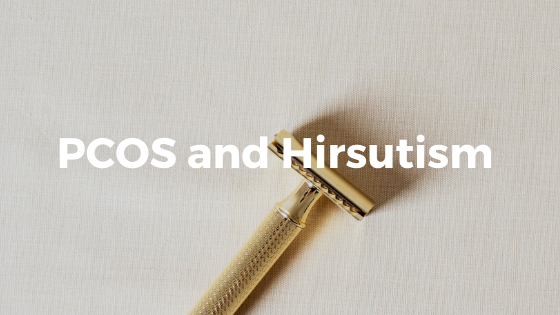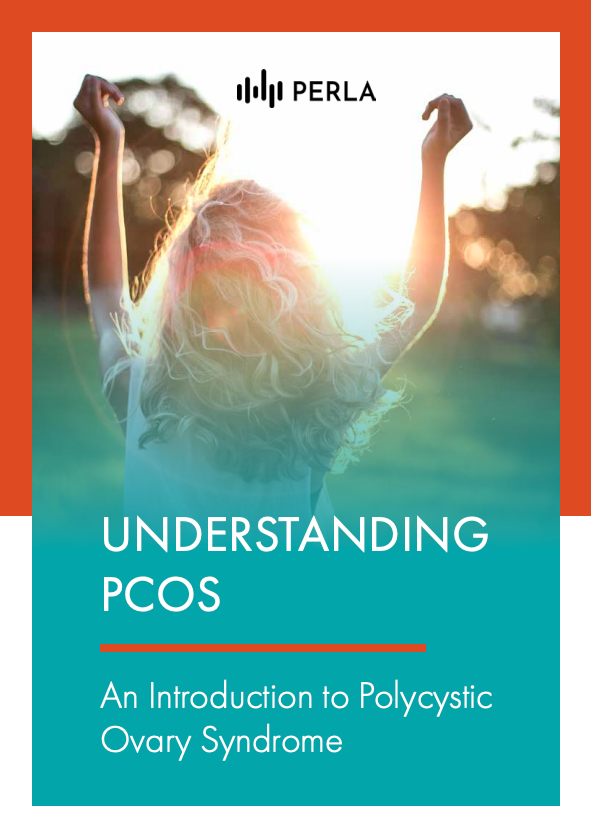Hirsutism, the growth of excessive body hair, can be very distressing to those who are affected. Polycystic ovary syndrome (PCOS) is the most common cause of hirsutism in women. Treating the underlying PCOS can lead to improvement of these symptoms. Let’s learn more about hirsutism and what to do about it:
The Relationship between PCOS and Hirsutism
Hirsutism affects 70-80% of women with PCOS.1 They may also suffer from symptoms such as irregular menstruation, acne, hair loss, and obesity. Hirsutism is defined as having coarse, dark hair (terminal hairs) on parts of the face and body where it is more usual for men to grow hair. In men, terminal hairs are normally seen in androgen-sensitive areas including the upper lip, chin, shoulders, chest, abdomen, inner thighs, and back, which is not usual in women.
Hirsutism is a sign that there’s an increased androgen action on hair follicles. There are two factors that are responsible for that:2
- Elevated levels of circulating androgens and/or
- Hair follicles have increased sensitivity to normal levels of androgen
All women normally produce small amounts of male hormones (androgens), but high levels of these hormones can lead to hirsutism. In other cases, excess hair growth is due to increased conversion of testosterone to dihydrotestosterone (DHT) with the help of an enzyme called 5a-reductase. Women with hirsutism have an increased 5α-reductase-activity in hair follicles.3
Causes of Hirsutism
The most common cause of excess hair growth is PCOS and idiopathic (unexplained) hirsutism. Androgen excess always comes from either the adrenal gland or ovaries.
Some medications can also result in hirsutism by increasing the levels of the hormone prolactin in the blood. Insulin resistance, which is a common finding in PCOS, may also lead to hirsutism as insulin stimulates the production of androgen in the ovaries.2
Other causes of hirsutism include:4
- Non-classical congenital adrenal hyperplasia
- Cushing’s syndrome
- Adrenal/ovarian tumors
- Thyroid dysfunction
- Acromegaly
Mechanisms of Hair Growth
Androgens are the key hormones that determine the type and distribution of hair throughout the body. As mentioned above, the culprit in hirsutism is not testosterone but dihydrotestosterone, which is a more potent male hormone.
There are two main types of hair: vellus and terminal. Before puberty, small, thin, non-pigmented vellus hairs are more common.2 The oil-producing glands in the androgen-dependent follicles are small. But when androgen levels are elevated, more vellus hairs in the androgen-sensitive areas are converted to terminal types (thicker and darker hairs), resulting in hirsutism. It also increases sebum production. So androgen does not only alter the type of hair present but also increases the oiliness of your skin and hair. 5,6
Additionally, high levels of androgens reduce the time scalp hairs spend in the growth phase,7 so some women will experience male-pattern hair loss.
It’s not clear why these hormones stimulate the growth of terminal hairs in the face while causing hair loss on the scalp. What is clear from many research studies conducted is that hair follicles do not share the same responsiveness to hormones.8 For instance, the eyelashes, eyebrows, and the hair on the side and the back of the scalp are somewhat resistant to the effects of androgens.
Treatment for Hirsutism
Treating hirsutism is a matter of personal choice, but it can have a psychological or medical impact. Excess hair growth, especially on the face, significantly affects a woman’s perception of her femininity. A variety of treatments are available to help minimize the appearance of unwanted hair.
It is important to understand that, while significant cosmetic improvement is possible, it is not immediate. Treatments may take at least 3-6 months to take effect and lifelong therapy may be necessary to prevent a recurrence.
Lifestyle Changes
A change of lifestyle is the most important treatment for hirsutism in women with PCOS, particularly if they are overweight.9 Weight reduction reduces androgen secretion, insulin resistance, and hyperinsulinemia. This further results in the improvement of the menstrual cycle and hirsutism.
Medications10
The following medications could be an option to improve hirsutism, make sure to discuss them with your doctor before starting any of them:
- Birth control pills: most commonly used drugs for the suppression of androgen production in the ovaries, reducing free testosterone.
- Spironolactone: a potent anti-androgenic drug that suppresses testosterone by inhibiting the binding of dihydrotestosterone to receptors in the skin.
- Cyproterone acetate: decreases the production of androgens in the ovaries and antagonizes the androgen receptor in the skin.
- Flutamide: a non-steroidal anti-androgen that binds to androgen receptors. It is rarely used because of significant adverse effects.
- Finasteride: inhibits the action of the 5α-reductase enzyme. It may be useful for the treatment of hirsutism in women but is not advisable during pregnancy.
Hair Removal Methods (Epilation)
Cosmetic and mechanical measures play an important role in the management of hirsutism. While these methods do not treat the root cause of hirsutism, they are helpful while waiting for the full effect of hormonal therapy.
Shaving is the simplest way to remove unwanted hair. While it can result in blunt hair ends, which feel like “stubble”, it does not cause an increase in hair growth rate.10
Chemical depilatories, usually in lotion form, softens and dissolves hair above the skin so they can be wiped away. They are effective but may cause skin irritation when applied on the face.
Plucking or waxing may be helpful in areas where few hairs are present such as the eyebrows and around the nipples, but it may stimulate the growth of surrounding follicles (in animal models) and development of ingrown hairs.
Electrolysis provides long-term destruction of hair follicles with repeated treatments. The whole course may take months to years. Scarring can occur in the hands of inexperienced providers.
Laser therapy significantly reduces hair growth. It destroys hair by selectively targeting the pigment (melanin) in the hair follicle. It is more expensive than electrolysis but has fewer side effects, less painful, and requires fewer sessions.11
Medicated cream containing eflornithine can reduce hair growth. The hair will regrow once you stop using the cream. It may benefit women with light or vellus hair that does not respond to laser therapy.2
Sources:
- Spritzer P, Barone C, Oliveira F. Hirsutism in polycystic ovary syndrome: pathophysiology and management. CPD. 2016;22(36):5603-5613. doi:10.2174/1381612822666160720151243
- Mofid A, Seyyed Alinaghi SA, Zandieh S, Yazdani T. Hirsutism: hirsutism. International Journal of Clinical Practice. 2007;62(3):433-443. doi:10.1111/j.1742-1241.2007.01621.x
- Lowenstein EJ. Diagnosis and management of the dermatologic manifestations of the polycystic ovary syndrome. Dermatol Ther. 2006;19(4):210-223. doi:10.1111/j.1529-8019.2006.00077.x
- Unluhizarci K, Kaltsas G, Kelestimur F. Non polycystic ovary syndrome-related endocrine disorders associated with hirsutism: CAUSES OF HIRSUTISM. European Journal of Clinical Investigation. 2012;42(1):86-94. doi:10.1111/j.1365-2362.2011.02550.x
- Azziz R, Carmina E, Sawaya ME. Idiopathic hirsutism. Endocr Rev 2000; 21: 347–62
- Messenger A. The control of hair growth: an overview. J Invest Dermatol 1993; 101: 4–9S.
- Deplewski D, Rosenfield RL. Role of hormones in pilosebaceous unit development. Endocr Rev 2000; 21: 363–92.
- Randall VA: Androgens and human hair growth. Clin Endocrinol 40: 439, 1994
- Setji TL, Brown AJ. Polycystic ovary syndrome: diagnosis and treatment. Am J Med 2007; 120: 128–32.
- Azziz R. Hirsutism. GLOWM. Published online 2009. doi:10.3843/GLOWM.10302
- Bhat YJ, Bashir S, Nabi N, Hassan I. Laser Treatment in Hirsutism: An Update. Dermatol Pract Concept. 2020;10(2):e2020048. Published 2020 Apr 20. doi:10.5826/dpc.1002a48


